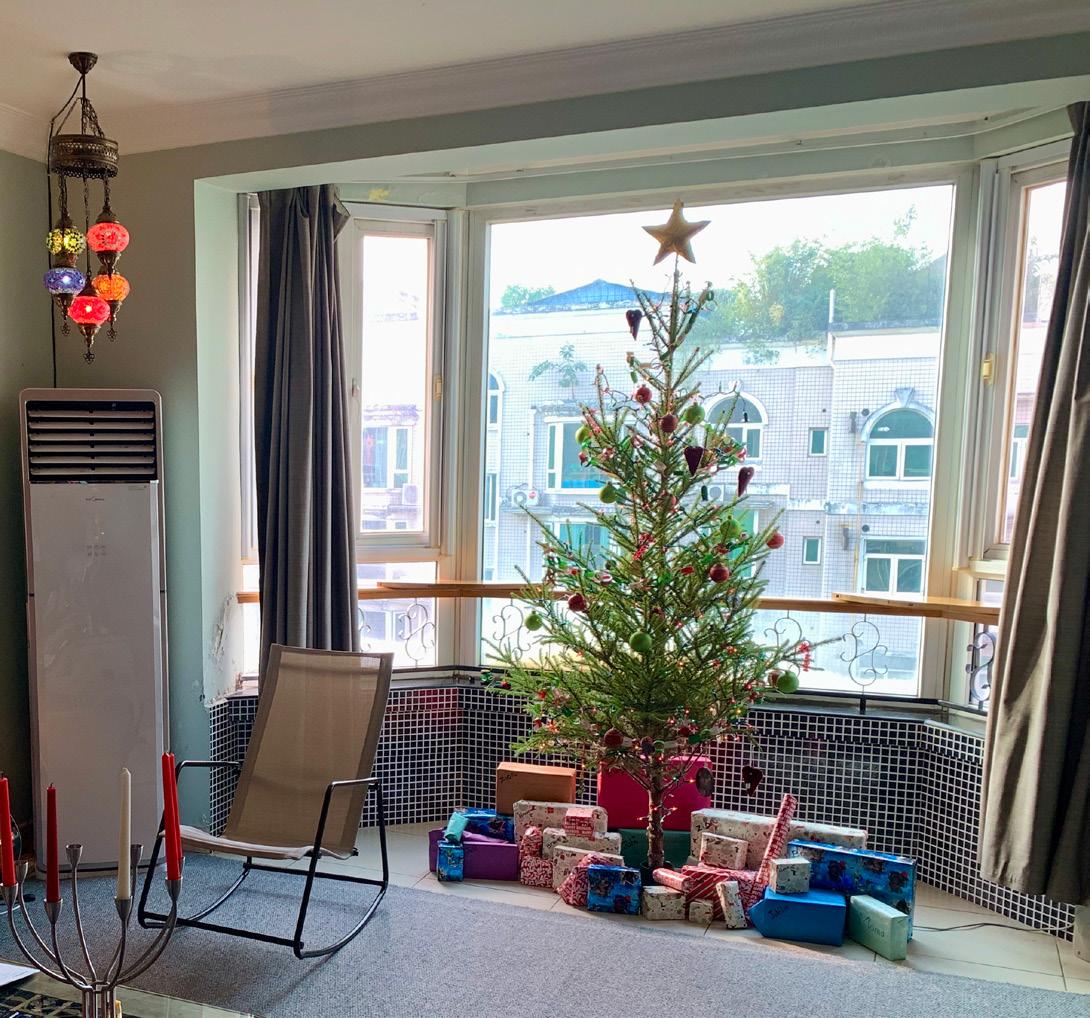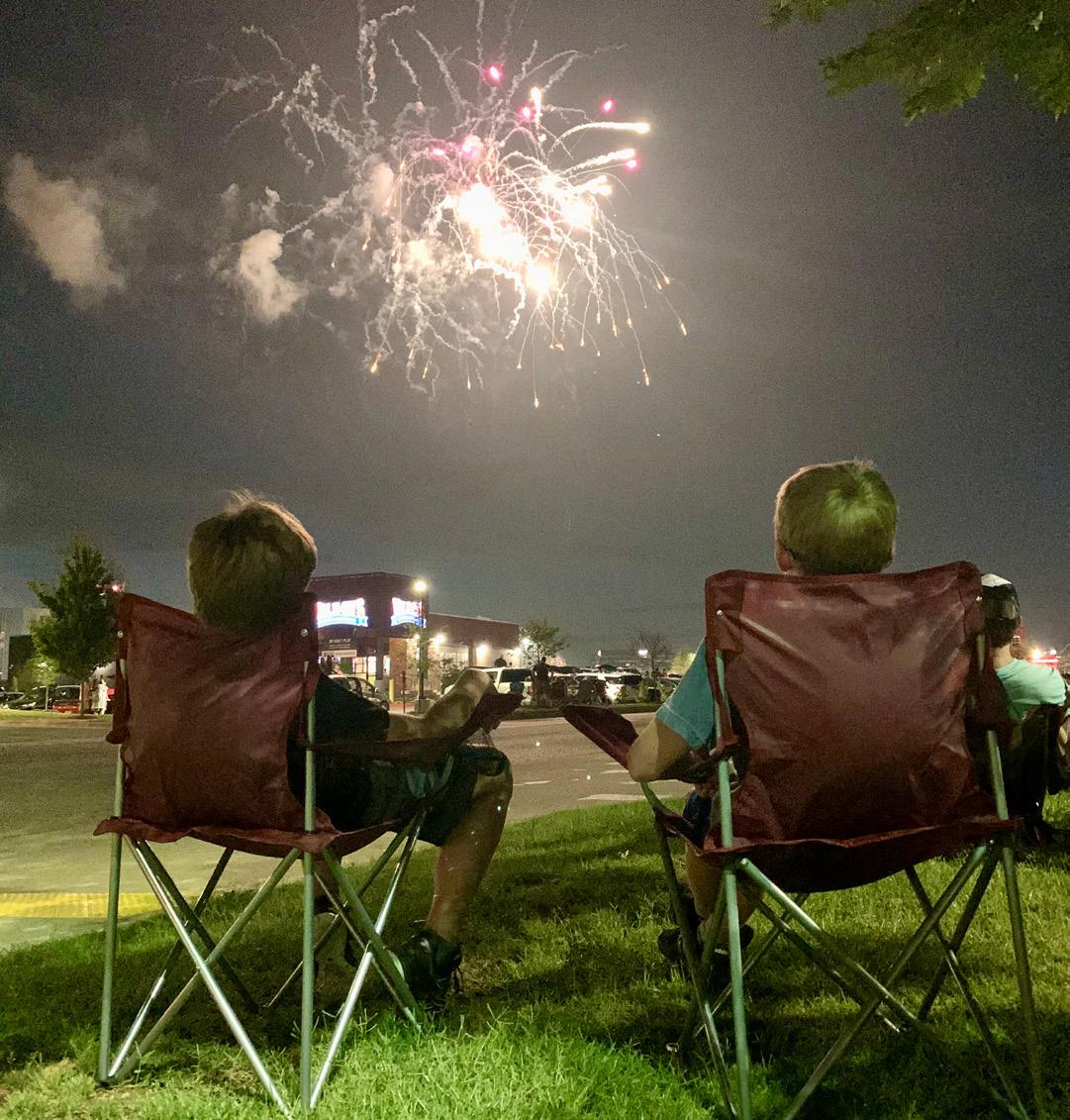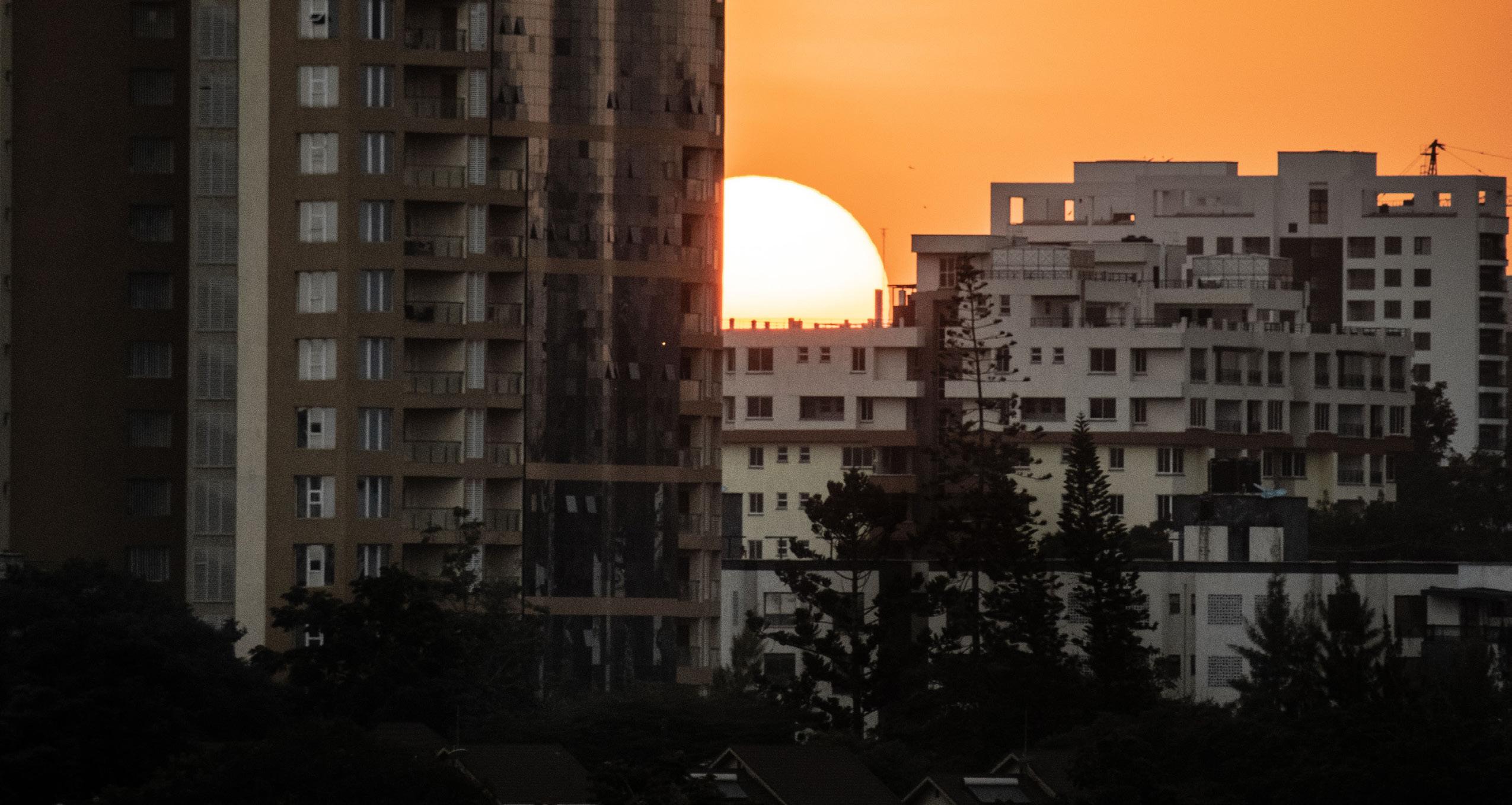
9 minute read
The Heeling Process Kayla Rupp
The Heeling Process
Advertisement
By Kayla Rupp
In an attempt to placate myself during a bout of anxiety recently, I fell down a rabbit hole online about the obscure horticultural technique of heeling-in bare root plants. Before I knew it, I was bookmarking articles and scribbling notes, tears of passion streaming down my face. On second thought, maybe they were tears of fatigue (by now it was past 2 a.m.) or tears from dry eye after staring at my computer screen too long. More than likely, however, they were tears of relief. Somehow, this funny little topic was giving me a box in which to put my pain. I was no longer reading about plants. I was reading a manual for understanding the crisis my teenage TCKs had just lived through.

The End of the Growing Season
As an American Michigander, born and raised, I can only speak to the TCK experience from the perspective of a mother who has raised them. For twelve years, I ran an American midwestern-style household in Chinese-urbia. We made our own ricotta cheese for lasagna, our own hams for Easter. Come December, stockings were hung by the kongtiao with care. Family movie nights found us watching Swiss Family Robinson or The Sound of Music, while the sounds of erhus and late-night hawkers drifted up from the streets. My kids were mostly blond and wore Old Navy clothes, albeit stained with Sichuan chili oil. Their pale-skinned hands were as adept at using chopsticks and counting kuai as they were at controlling joysticks and solving Rubik’s Cubes. They weren’t exactly American. They certainly weren’t Chinese. And yet, at the end of every day–every spicy, saucy, multicultural day–my kids laid their happy heads on their pillows in the concrete bedrooms of our seventh-floor walkup, under a salmon-colored sky, and they were home.
Until that fateful day in January 2019, when we closed our front door, checked the lock, and hurried to the gate. Our taxis were waiting to take us to the airport for a quick trip to Thailand, where we would attend a conference followed by a vacation. We left the usual clutter in our wake, the usual half-eaten condiments in the fridge. There may well have been clothes in the dryer.
Or did I fold those and put them away?
I guess I’ll never know.
Dormancy Saves the Plant
I feel like a tree pulled up by its roots and tossed on the ground,” my son sobbed, always the articulate one.
There were no words to comfort him. China had closed its borders to foreigners due to the virus. My son had just been told that the home he left in January without so much as a backward glance was now unreachable. He would, in fact, never go there again.
This came at the end of months in Thailand, washing and rewashing our vacation clothes, buying new sandals for the kids when they’d outgrown those we’d packed. Three days after we’d left home, a strange super pneumonia had sprung up in China. Our conference/vacation quickly spiraled into a crisis. Thailand, which had been our chosen place of respite for years, now felt like a prison. The novelty of night markets and monkeys had long since worn off. Even the mango sticky rice felt like glue in our mouths. We kept thinking the virus would run its course in China and we could finally, finally go home.
Quite the contrary.

The virus had now been given a name, COVID-19. It was no longer just in China, either. Like seeds on the breeze, it had fluttered down into every corner of the earth, planting death, fear, and disruption wherever it took root.
Watching my son cry, it occurred to me that the virus may not have killed him, but it had killed his life. His happy, spicy days of energized TCK living were as cold on the ground as the bodies piling up in Wuhan. We would have to move to the States now, where he would attend school near where his father grew up. We may as well have told him we had decided to amputate his arms and legs.
He pulled away from us almost overnight. He pulled away from everything, in fact. His eyes became two frozen wells. His back curved protectively around his vitals, it seemed to me, until he looked more like a drying leaf than a boy, more like a withering branch than a young man. And yet, dormancy only looks like death. In actuality, dormancy is a means of survival. When conditions become too harsh, even uninhabitable, the plant goes dormant to preserve itself until the return of warmth and light.
Caring for Bare Root Plants
“He’s so ungrateful,” I growled to my husband, whose own frustrations played on his face. “Here we are, in this nice new house in America, with all our needs met and more besides! You have your new job; the kids have their great new school. What more does he want? He has a bike in the garage, Chick-fil-A down the street. Will anything ever be good enough for him again?”
Not only is dormancy necessary for a plant’s survival, but if forced to come out of dormancy too soon, the plant will die. Instead, a patient horticulturalist will practice something called heeling, which is to lay the uprooted plant on its side, at an incline, and then protectively pack loose soil around its exposed roots. This is done to keep the plant from coming out of dormancy before conditions are suitable to do so.
I would like to speak with one of these patient horticulturalists. I would like to ask her how she does it. Does it not break her heart to see her precious plant, once green and upright, laying lifelessly on its side like a forgotten pulled weed?

I can imagine the response from this hypothetical gardener from whom I have sought parenting advice. Her eyes would glitter with wisdom as her hands would snip a cutting from a bonsai and she would say, “My child, you are mistaken. Heeling-in bare root plants is not forgetting about them.”
A puzzled look from me would bring further clarification.
“Sometimes,” she would whisper, “the kindest thing we can do for the ones we love is let them be.” There are things that shape us when we are young in ways that no transplant can reshape. For my TCKs, a pandemic came and pruned them to the pulp.”
Spring Will Come Again
Heeling-in can go on indefinitely, so long as the plant is properly cared for while it lays. Provided that I keep soil on their roots, damp and fresh, my kids will stay alive until they are ready to be planted in the ground. They still look dead to me in many ways, but now I know better than that. This is an important time for them. An important time for me. And it cannot be rushed.
There are days when I lock myself in my new bedroom, in our subdivision beside a winding creek in rural Arkansas, and weep for all my kids have lost. For all the goodbyes they didn’t get to say, and for all the closure they will never have. I walk through our Chinese apartment in my mind, stepping over the creaky boards so as not to waken the youngest. I go into each room in turn, look about me, take it in. Memory and grief mingle with the smells of street food and cherry blossoms. In my mind our apartment is spick and span, even though it rarely was. A bowl of persimmons sits at the center of our table. The loveliness of it all makes me weep harder, until something catches my eye. Handprints. Childsized handprints smudged on the window glass, leftover from happier times. I stop crying.
Spring will come again for sure. My children will not lay sideways forever. But they will probably keep throwing their toilet paper in the waste basket. They will probably keep measuring temperature in Celsius, weight in kilograms. They will never find an English word to convey fully the meaning of lihai. There are things that shape us when we are young in ways that no transplant can reshape. For my TCKs, a pandemic came and pruned them to the pulp.
Like all teenagers of their generation, COVID-19 destroyed the world they knew. In their case, however, my kids have the extra layer of loss that only other TCK teenagers who have lived through COVID-19 will understand.
My oldest son goes to school with deer hunters and catfish baters here in Arkansas. Lanky boys with mullets and mud-caked cowboy boots. Classroom conversations include such topics as how to skin a squirrel and what seasonings bring out the flavor of frog legs.
“Have you ever cleaned and dressed a deer?” my son was asked one day.
“No,” he admitted. “But I once helped slaughter a lamb on a rock in the Himalayan foothills. And then, for my troubles, I was rewarded with a strip of lamb to roast over my fire with my friends.”
Blank stares met his tale at first, but understanding quickly broke through and was followed by smiles, and then guffaws and back slaps.

His surroundings are warming up to him, and he to them. Soon enough, he will be ready for planting and he will take root. He may not look like the sycamores and the cedars all around him, but he will have a trunk and branches and leaves all the same. Until then, I must be patient. I must be willing to let him lie, cockeyed and lifeless. It isn’t what I dreamed of for my children, but then nothing about the past year has been dreamy for any of us. And yet I dream that good things will come of it. I dream that the shared experience of this crisis will close the gaps between us just enough to make conditions suitable for growth.

Kayla Rupp is a children’s minister in northwest Arkansas. A former missionary to China, Kayla and her husband raised four children in a multicultural, multinational context. When she isn’t mothering or ministering, she is writing, cooking, or sitting on her front porch.










